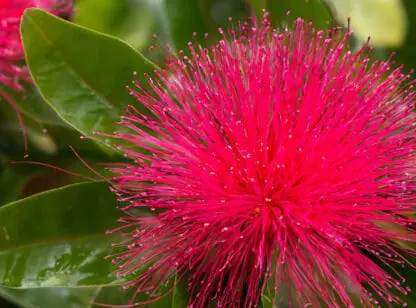Maybe you’ve treated a minor injury with arnica or given Calms Forte to a teething child. Perhaps you’ve reached for Oscillicoccinum to treat the flu. These are three of the most widely used homeopathic remedies. You may have wondered how those little pellets work, or been unaware that there was anything special about them in the first place.
They all belong to a fascinating branch of natural medicine called homeopathy.
Homeopathic formulas consist of plants and/or minerals that are dissolved in alcohol and water. The remedies undergo a series of dilutions and are subjected to vigorous shaking called succussion which increases the kinetic energy of the water. This structured water is placed on lactose pellets, giving homeopathic pills their characteristic sweet taste. The remedies can also be incorporated into creams such as the popular Traumeel.
Displays at health food stores often dispense homeopathic remedies in cylindrical containers labeled with the name of the substance, usually in Latin, followed by 6X or 30C, which relates to potency. A 6X remedy has been diluted a number of times using a 1:10 ratio of starting material to water, while a 30C potency uses a dilution scale of 1:100. The X scale is considered lower potency and is useful when symptoms are confined to the physical realm, such as bruising. The C scale represents higher potency and can be used when symptoms affect the mental or emotional level, such as shock resulting from a traumatic experience.
Homeopathy operates on the principle of “like cures like,” the same theory that underlies allergy desensitization and vaccination. For example, homeopathic Rhus toxicodendron is used to treat skin rashes with itchy hives or blisters, such as those occurring with dermatitis or shingles. Rhus toxicodendron is better known as poison ivy, a plant which causes burning skin outbreaks on contact. When given to someone experiencing these symptoms, it will help to abate the irritation.
In addition to treating acute symptoms, homeopathy can alleviate long-standing problems. Skilled practitioners interview a client, often for 1.5 – 2 hours, asking about everything from childhood illness to food preferences to fears and aversions. The homeopath chooses a remedy from one of over 4,000 documented substances that best matches the client’s mental, physical and emotional picture. The remedy is intended to activate the innate healing force, and when chosen wisely, can work rapidly and dramatically. I personally witnessed a patient who stopped smoking after 40 years when given just one dose of homeopathic sulphur.
Homeopathy enjoys wide acceptance around the globe. It is used in the hospitals of Britain’s National Health System and is covered by health insurance in Switzerland. American medical schools, such as Boston University, taught homeopathy until the 20th century. Naturopathic medical colleges continue that tradition today, although one need not be a doctor to be trained in the art of homeopathic prescribing.
Clinical research into homeopathy is ongoing. While some studies find homeopathy no better than placebo, others have concluded that it is safe and cost-effective. Because homeopathic remedies are diluted, they do not interfere with the actions of medication, and they are appropriate for children and elders.
Dr. Jessica Needle is a licensed naturopathic doctor practicing at Optimal Health Center in Palm Desert and can be reached at (760) 568.2598.









































Comments (0)